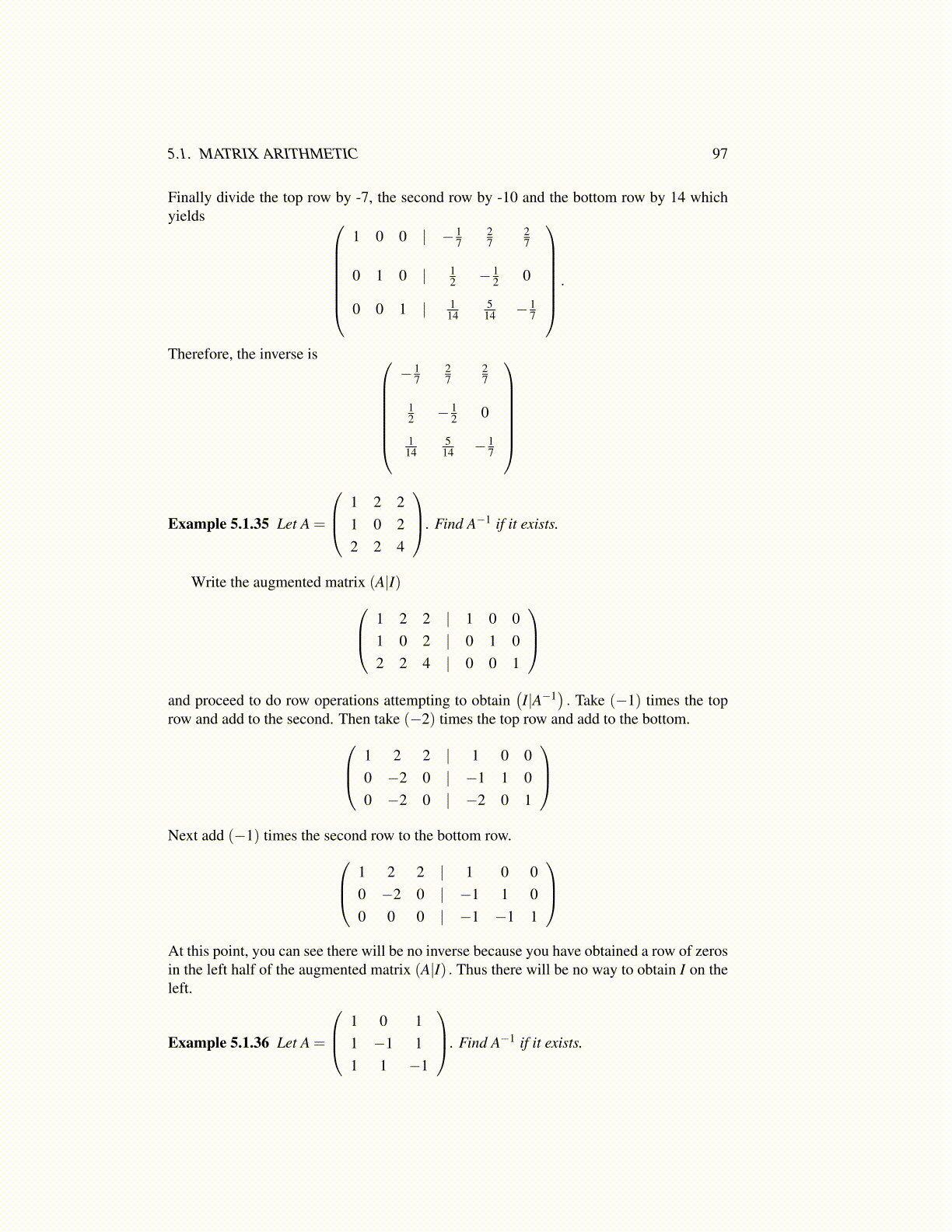
5.1. MATRIX ARITHMETIC 97
Finally divide the top row by -7, the second row by -10 and the bottom row by 14 whichyields
1 0 0 | − 17
27
27
0 1 0 | 12 − 1
2 0
0 0 1 | 114
514 − 1
7
.
Therefore, the inverse is − 1
727
27
12 − 1
2 0
114
514 − 1
7
Example 5.1.35 Let A =
1 2 21 0 22 2 4
. Find A−1 if it exists.
Write the augmented matrix (A|I) 1 2 2 | 1 0 01 0 2 | 0 1 02 2 4 | 0 0 1
and proceed to do row operations attempting to obtain
(I|A−1
). Take (−1) times the top
row and add to the second. Then take (−2) times the top row and add to the bottom. 1 2 2 | 1 0 00 −2 0 | −1 1 00 −2 0 | −2 0 1
Next add (−1) times the second row to the bottom row. 1 2 2 | 1 0 0
0 −2 0 | −1 1 00 0 0 | −1 −1 1
At this point, you can see there will be no inverse because you have obtained a row of zerosin the left half of the augmented matrix (A|I) . Thus there will be no way to obtain I on theleft.
Example 5.1.36 Let A =
1 0 11 −1 11 1 −1
. Find A−1 if it exists.